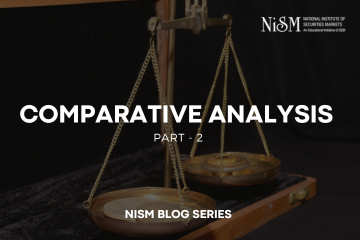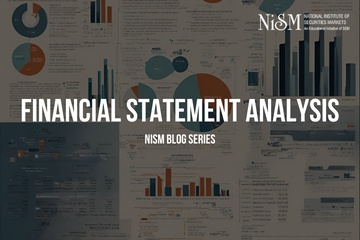Financial statement is a formal record of the financial activities and position of a business, organization, or individual. It summarizes financial transactions, performance, and financial health over a specific period. Financial statement analysis involves a comprehensive examination of a company’s financial statements, including the income statement, balance sheet, and cash flow statement. Analysts assess revenue, earnings, assets, liabilities, and cash flow to gauge financial health and performance.
Balance Sheet
A balance sheet is one of the fundamental financial statements that provides a snapshot of a company’s financial position at a specific point in time. It outlines what a company owns (assets), what it owes (liabilities), and the shareholders’ equity (the difference between assets and liabilities). It provides a snapshot of a company’s financial health at a specific moment, showing how much it owns versus how much it owes. Investors, creditors, and analysts use the balance sheet to assess a company’s ability to pay its debts, its overall financial strength, and its potential for growth. It helps in comparing a company’s performance over time or against competitors within the same industry The balance sheet assessment reveals a company’s liquidity through current and quick ratios. A strong liquidity position, reflecting ample current assets to cover short-term liabilities, may indicate a company’s ability to meet its financial obligations. Companies with healthy liquidity positions might be considered more favorable for investment due to their ability to navigate short-term challenges. Balance Sheet indicates the amount of debt a company carries. High debt might indicate risk, while low debt might signal financial strength. Understanding of a company’s financial health and performance through balance sheet analysis empowers investors to make informed decisions, whether they aim for long-term growth, short-term gains, or a balanced investment portfolio.
From the balance sheet, investors focus on liquidity, examining the adequacy of current assets to cover short-term obligations and leveraging ratios like the current ratio to assess this. Debt levels hold significant weight, prompting a close evaluation of the debt structure, its impact on the company’s risk profile, and the debt-to-equity ratio. Additionally, investors analyze asset quality, seeking insights into the composition and efficiency of assets in generating revenue. A balance sheet helps derive various financial ratios, broadly, Liquidity, Solvency, Efficiency, and Valuation ratios. Liquidity ratios like the current and quick ratios provide insights into a company’s ability to cover short-term obligations, guiding assessments of short-term financial health. Leverage ratios such as the debt-to-equity and debt ratio highlight a company’s reliance on debt financing, aiding in gauging financial risk. Efficiency ratios like the asset turnover ratio reveal how effectively a company utilizes its assets to generate revenue, while profitability ratios such as ROA and ROE unveil its ability to translate these assets into profits. Valuation ratios like the P/B ratio assist in determining if a stock is undervalued or overvalued in relation to its book value. These ratios, derived from the balance sheet, collectively empower investors with critical insights into a company’s performance, risk exposure, and potential returns, forming the bedrock of informed investment decisions. Tracking changes over time and analyzing them against industry standards further assessment, ultimately guiding their investment decisions.
Income Statement
An income statement, also known as a profit and loss statement, is a financial report that summarizes a company’s revenues, expenses, and profits (or losses) over a specific period. The income statement provides valuable insights into a company’s financial performance, indicating its ability to generate profit, manage expenses, and operate efficiently over a specific period. Investors, analysts, and stakeholders use this statement to assess the company’s profitability and financial health. Income Statements provide a snapshot of a company’s financial performance by detailing its revenues, expenses, and overall profitability over a specific period.
Ratios derived from the income statement offer crucial insights into a company’s financial health and guide investment decisions. Metrics like profit margin unveil a company’s efficiency in generating profits from sales, influencing investor confidence. The profit Margin ratio shows the company’s profitability by indicating how much profit is generated from each dollar of sales. A higher profit margin signifies better efficiency in managing costs and higher earnings potential, which can positively impact investment decisions. Return on Assets (ROA) measures how effectively a company uses its assets to generate profit. It indicates the company’s efficiency in utilizing its resources. Investors generally prefer a higher ROA as it suggests better management of assets to generate earnings. Return on Equity (ROE) measures a company’s ability to generate profits from shareholders’ equity. It shows how effectively the company reinvests shareholder funds. Higher ROE is often seen as a sign of efficient utilization of shareholders’ investments and can positively influence investment decisions. Earnings Per Share (EPS) reflects the company’s profitability on a per-share basis. It’s a crucial metric for investors as it indicates how much profit a company makes for each outstanding share. Higher EPS can make a company more attractive to investors seeking profitable opportunities. The price-earnings (P/E) ratio compares a company’s current share price to its earnings per share. It helps investors assess the company’s valuation. A higher P/E ratio might indicate that investors expect higher earnings growth in the future, while a lower P/E ratio might suggest undervaluation. Operating margin measures the proportion of revenue that remains after covering variable costs of production. It shows how efficiently the company manages its operating expenses. Investors generally prefer a higher operating margin. The debt-to-equity ratio compares a company’s total debt to its shareholders’ equity. It indicates the company’s reliance on debt financing. A lower debt-to-equity ratio is often preferred, suggesting lower financial risk and better financial health. These ratios help assess a company’s performance, profitability, efficiency, and financial health.
Cash Flow Statement
A cash flow statement is a financial report showing the cash inflow and outflow within a company over a specified period. Cash flow analysis is crucial in fundamental analysis as it reflects a company’s ability to generate cash from its operating activities, manage debts, invest in growth, and provide returns to shareholders. It offers insights into the company’s cash position, which is vital for its sustainability. Companies exhibiting stronger financial health and better cash flow management are often preferred in investment decisions. The CFS helps evaluate a company’s ability to meet its short-term obligations. Investors can assess how the company manages its cash flow from operating, investing, and financing activities. Negative trends or inconsistencies in cash flow can signal underlying problems within the company, such as issues with sales, high debt, or inefficient operations. Consistent positive cash flow from operations indicates a healthy and sustainable business model.
Cash flow can be divided into three sections based on their sources and uses of cash: operating activities, investing activities, and financing activities. The operating section reveals the cash generated or utilized by the core business operations, encompassing sales, expenses, and taxes. Meanwhile, the investing section sheds light on cash flow from asset investments, like property or equipment. Lastly, the financing section elucidates cash movements linked to capital structure, encompassing actions such as issuing stock, paying dividends, or acquiring loans. This statement is pivotal for investors and stakeholders, providing insights beyond profitability by illuminating a company’s ability to generate cash and meet its financial obligations. Ratios derived from the Cash Flow Statement (CFS) provide valuable insights for investment strategies.
• Operating Cash Flow Ratio: Assesses a company’s ability to generate cash from its core operations, often calculated as Operating Cash Flow divided by Total Debt. A higher ratio indicates a better capability to cover debt obligations from operating activities.
• Free Cash Flow (FCF) Yield: FCF Yield measures the cash generated after accounting for capital expenditures. It’s calculated as FCF divided by Market Capitalization. A higher FCF Yield suggests the company generates ample cash relative to its market value, indicating potential value for investors.
• Cash Flow to Sales Ratio: It evaluates the percentage of sales that convert into cash. It’s computed as Operating Cash Flow divided by Sales. A consistent or improving ratio signifies efficient cash generation from sales.
• Cash Flow Coverage Ratios: These ratios assess a company’s ability to cover various obligations: Interest Coverage Ratio and Debt Service Coverage Ratio. Interest Coverage Ratio is measured by Operating Cash Flow divided by Interest Expense. It indicates how easily a company can cover interest payments. Debt Service Coverage Ratio is determined Operating Cash Flow divided by Total Debt Service. It gauges the ability to service all debt obligations.
• Cash Return on Assets (CROA): CROA measures the cash generated from a company’s total assets. It’s calculated as Operating Cash Flow divided by Total Assets. A higher CROA indicates efficient utilization of assets to generate cash, indicating that a company efficiently generates cash from its assets.
• Dividend Coverage Ratio: It’s calculated as Operating Cash Flow per Share divided by Dividends per Share. It indicates if a company’s cash flow adequately covers dividend payments. A high Dividend Coverage Ratio is generally considered positive for investment, indicating a company’s ability to sustain and potentially increase dividend payments using operating cash flow.
• Capex to Operating Cash Flow: Capital Expenditure (Capex) refers to the funds a company invests in acquiring, upgrading, or maintaining physical assets like property, buildings, equipment, or technology with the aim of improving or expanding its operations. The Capex to Operating Cash Flow ratio signifies the proportion of cash used for capital expenditures concerning the cash generated from operations. A lower ratio might suggest positive capital expenditure management.
Cash Flow from Operations (CFO) reflects the cash generated or used by a company’s core business operations. A positive CFO indicates that the company generates enough cash from its day-to-day activities to sustain its operations without relying on external financing. This stability in cash generation is a positive sign for investors. CFO reflects changes in working capital, such as inventory, accounts receivable, and accounts payable. Monitoring these changes can indicate how effectively a company manages its working capital and whether it can convert sales into cash efficiently. A strong CFO can indicate the company’s ability to reinvest in its operations, pursue growth opportunities, or distribute dividends to shareholders. It provides insights into the company’s potential for future expansion and development.
Cash Flow from Investing Activities (CFI) details cash flows related to asset investments like property, equipment, acquisitions, or divestitures. Analyzing these cash flows helps understand management’s allocation of resources. It indicates whether the company invests in projects that can drive future growth and profitability. Understanding the cash flows related to acquisitions, mergers, or divestitures provides insights into the company’s strategic decisions. It helps assess whether these actions align with the company’s goals and if they are generating positive cash flows. CFI analysis aids in understanding the risk associated with large capital investments. Excessive spending on non-productive assets or risky ventures might indicate potential financial strain or misallocation of resources.
Cash Flow from Financing Activities (CFF) details cash flows related to raising capital, repaying debts, issuing stocks, or paying dividends. Analyzing these cash flows helps investors understand how a company funds its operations and growth. It provides insights into the company’s financing structure and its strategies for managing debt and equity. Positive cash flow from financing might indicate a company’s ability to raise capital without solely relying on debt. It reflects the company’s financial strength and ability to attract investors or secure financing under favorable terms. Understanding a company’s cash flow from financing activities helps evaluate its financial risk. High levels of debt or reliance on external financing for operations cause risks.
In conclusion, reviewing financial statements before making important decisions is important because these documents offer a comprehensive snapshot of a company’s fiscal health and performance. Financial statements provide vital insights into its profitability, liquidity, solvency, and overall stability. By analyzing income statements, balance sheets, and cash flow statements, stakeholders can study the company’s past and current financial standings, identify trends, and predict future trajectories. Key financial metrics and ratios derived from these statements, decision-makers can identify potential risks and opportunities, enabling them to make well-informed choices. A thorough examination of financial statements is a fundamental step in understanding the financial health and stability of a business, contributing to more informed and prudent decision-making.












